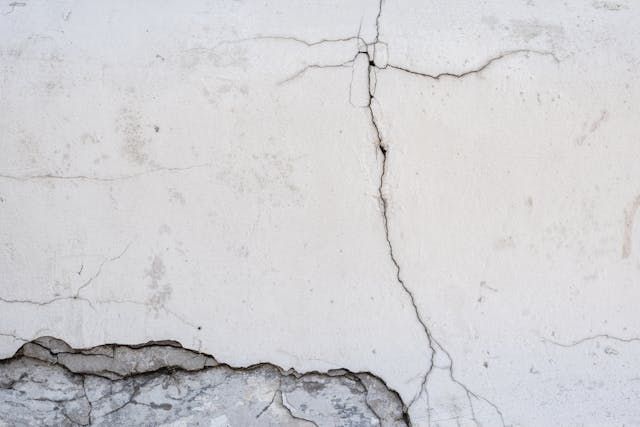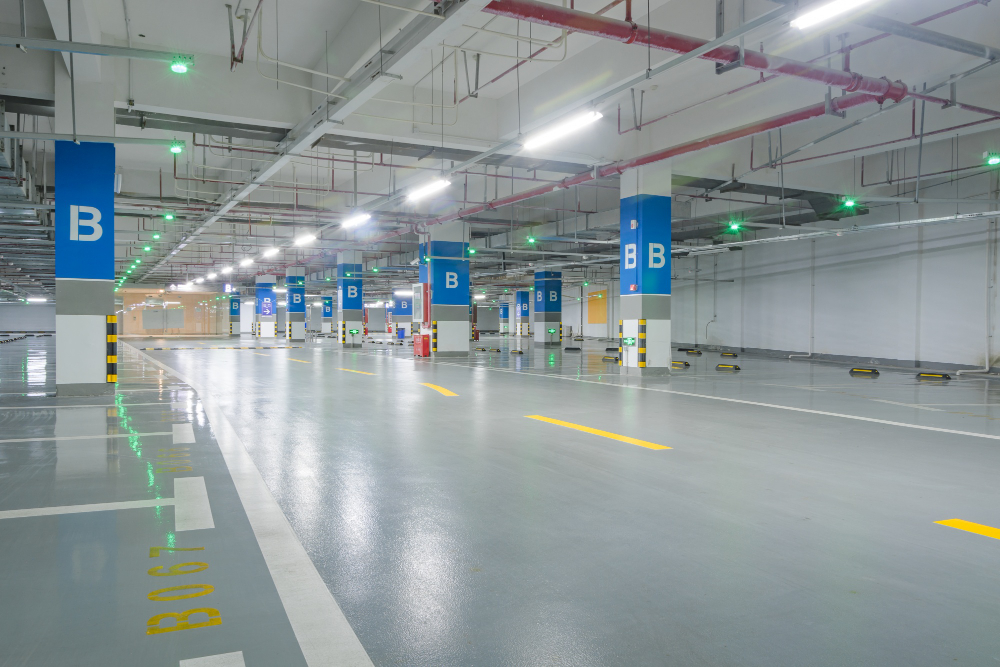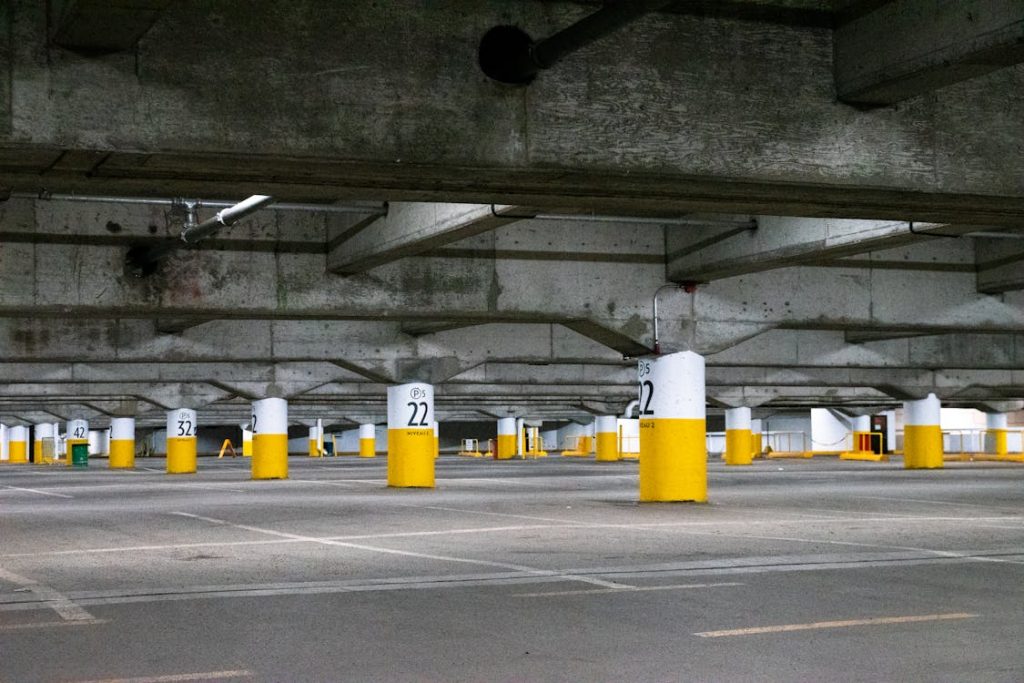- Regular maintenance ensures a safe, functional, and visually pleasing parking area, essential for visitor and customer satisfaction.
- Line striping and directional markings improve traffic flow, safety, and compliance with ADA standards, promoting inclusivity and accessibility.
- High-quality paint and reflective markings enhance visibility at night, ensuring that parking guidelines remain clear and effective.
- Promptly addressing minor repairs like potholes and cracks prevents them from escalating into more costly and extensive issues.
- Budgeting for maintenance and repairs aids in financial planning, allowing for timely and necessary upkeep of the parking lot.
Parking lots are often customers’ or visitors’ first impression of a business or property. However, their maintenance can sometimes be overlooked. Regular maintenance not only prolongs the life of the parking area but also enhances safety and curb appeal. This guide is designed for property managers, business owners, and facility maintenance staff to help ensure their parking lots remain in top condition.
The importance of parking lot maintenance goes beyond just aesthetics. A well-maintained parking lot ensures safety, minimizes liabilities, and saves money in the long run by avoiding costly repairs. From regular inspections to addressing drainage issues, this article will cover everything you need to know to keep your parking lot in pristine condition.
Regular Inspections
Regular inspections are crucial in maintaining a parking lot’s integrity and appearance. These inspections allow for the early identification of potential issues such as cracks, potholes, and drainage problems before they escalate into more significant, costly repairs. By scheduling routine check-ups, property managers and maintenance staff can ensure that the parking area remains safe, accessible, and visually appealing for all users. This proactive approach extends the parking lot’s lifespan and minimizes disruptions and liabilities, contributing to a positive experience for visitors and customers.

Frequency of Inspections
Conducting regular inspections is crucial. Inspections should be conducted seasonally to address any potential weather-related damages. Additionally, a more thorough inspection is recommended at least once a year.
Common Issues to Look For
Inspect for potholes, cracks, drainage problems, fading lines, and markings. These can indicate larger underlying issues and should be addressed promptly to prevent further damage.
Documenting and Reporting Problems
Establishing an effective system for documenting and reporting problems is essential for maintaining a parking lot’s overall health. Accurate documentation ensures that any issues identified during inspections are properly recorded, assessed, and addressed promptly.
By implementing a clear process for reporting problems, property managers and maintenance staff can prioritize repairs, allocate resources efficiently, and keep stakeholders informed about the parking lot’s status. This section will explore the best practices for documenting and reporting problems to ensure a proactive and organized approach to parking lot maintenance.
Methods for Documenting Issues
Take photos and note any damages you find. This can help you track changes over time and provide a clear record for maintenance teams.
How to Report Problems
Establish a clear procedure for reporting problems to your maintenance team or contractor. Prompt reporting can significantly reduce repair times and costs.
Cleaning and Debris Removal
Maintaining a clean and debris-free parking lot is fundamental to preserving its appearance and functionality. Regular cleaning enhances the aesthetic appeal, prevents potential hazards, and prolongs the pavement’s lifespan. Leaves, dirt, trash, and other debris can accumulate quickly, leading to drainage issues and even causing cracks or potholes if left unaddressed. This section will outline the key steps and best practices for cleaning and removing debris in parking lots.
Routine Cleaning Practices
A clean parking lot is not only more appealing but also safer. Regular sweeping can prevent debris build-up that could lead to drainage issues or damage the lot’s surface.

Dealing with Seasonal Debris
Each season brings challenges, from fallen leaves in autumn to snow in winter. Establish a seasonal cleaning routine to address these challenges effectively.
Preventative Measures
Implementing preventative measures is essential to extend the lifespan of your parking lot and minimize significant repair costs down the line. Proactive maintenance can prevent minor issues from escalating into major problems, ensuring the safety and satisfaction of its users. This section will cover a range of preventative strategies to keep your parking lot in optimal condition, addressing both the surface and sub-surface components.
Crack Sealing
Sealing cracks as soon as they appear prevents water from seeping in and causing further damage. This is best done in warmer months when the pavement is dry.
Seal Coating
Seal coating every few years can protect against weather damage and enhance the appearance of your parking lot. It also provides a smooth surface for line striping. A proper seal coat is essential for extending the life of your lot. You should also consider seal coating if your lot has been recently resurfaced.
Addressing Drainage Issues
Proper drainage is essential to prevent water accumulation that can damage the parking surface. Ensure that your lot has adequate drainage and that drains are kept clear of debris.
Line Striping and Marking
Line striping and marking are essential for maintaining an organized and efficient parking lot. Clear, well-defined lines guide drivers and help maximize space utilization, ensuring vehicles are parked orderly. This enhances the overall appearance of the parking lot and contributes to safety by reducing the risk of accidents. Regular line striping and marking maintenance is crucial to keeping the lot functional and visually appealing.
Importance of Clear Markings
Well-defined parking spaces and directional markings improve traffic flow and enhance safety. They are also essential for ADA compliance.
Best Practices for Line Striping
Use high-quality paint and consider reflective markings for improved visibility at night. Re-stripe as necessary to maintain clarity and brightness.
ADA Compliance
Ensuring your parking lot meets accessibility standards is not just about compliance; it’s about inclusivity. Regular checks can help identify any areas that need adjustments to meet these standards.
Repair and Renovation
Regular maintenance of a parking lot is vital, but over time, more substantial repair and renovation may be necessary to address significant wear and tear. Repairing cracks, potholes, and other surface damage improves the lot’s appearance, extends its lifespan, and enhances safety for drivers and pedestrians. Renovation projects can also include updates to meet current codes and standards, such as those outlined by the ADA. You can proactively address these needs to ensure your parking lot remains functional, compliant, and visually appealing for years.
Minor Repairs
Address small issues like potholes and cracks promptly. This can often be done in-house or with the help of a professional maintenance team.
Major Renovations
If your parking lot shows significant wear and tear, it may be time for a major renovation. This can involve resurfacing or redesigning the layout to improve functionality and compliance.
Budgeting for Repairs
Planning for maintenance and repairs is essential for budgeting purposes. Regular inspections can help you anticipate future expenses, allowing you to allocate funds accordingly.
Conclusion
Regular maintenance of your parking lot is a critical aspect of property management. By implementing the tips discussed, you can ensure a safe, functional, and aesthetically pleasing parking area for your visitors and customers. Remember, preventative measures can save time and money in the long run, making them an investment in your property’s future.
